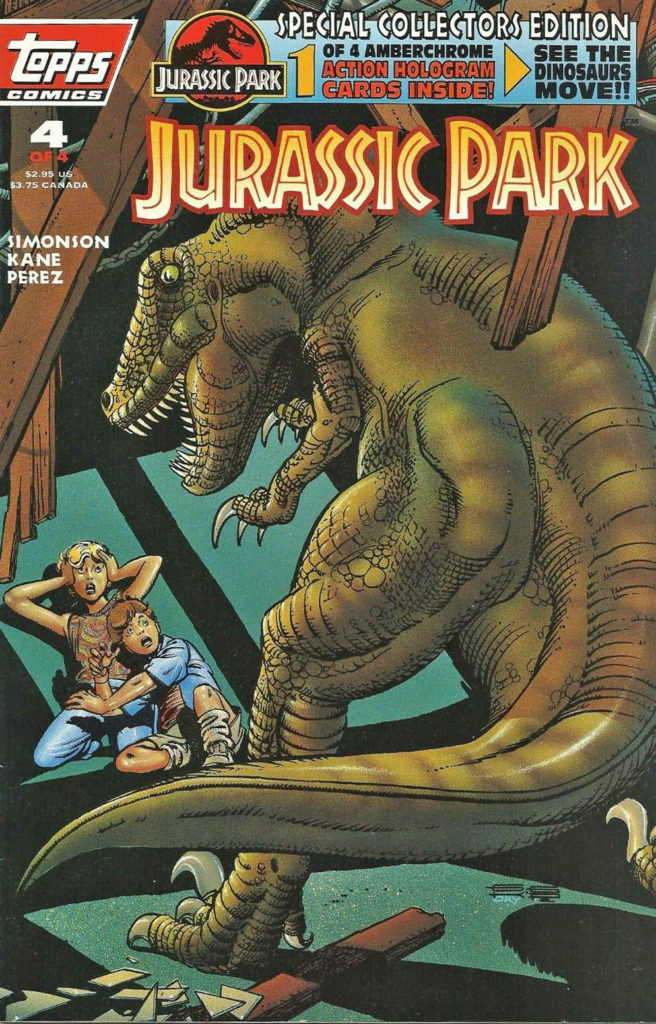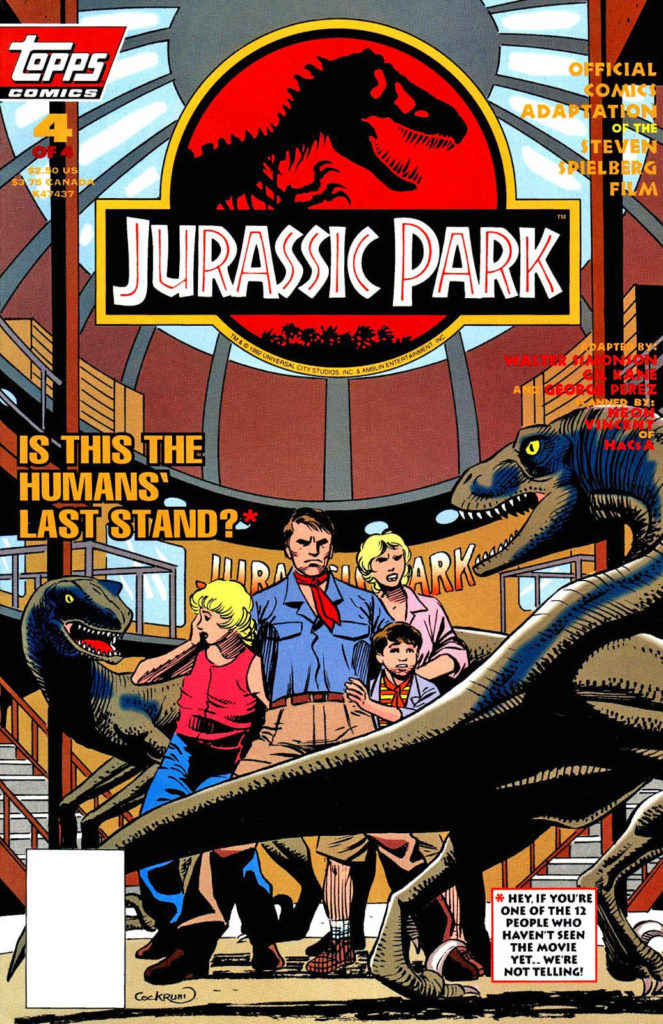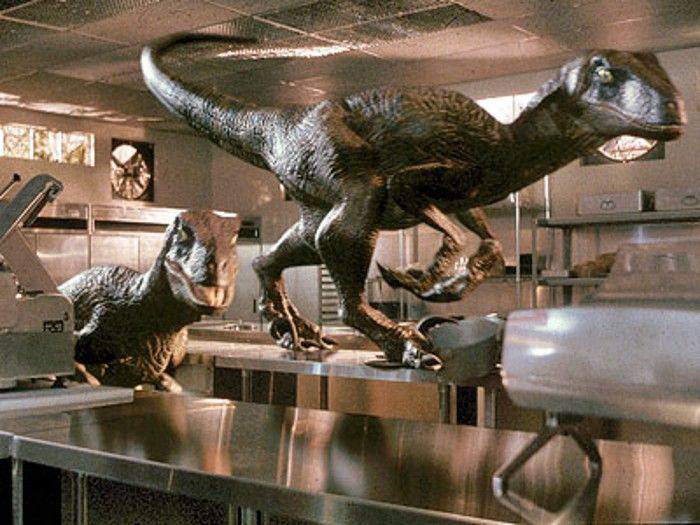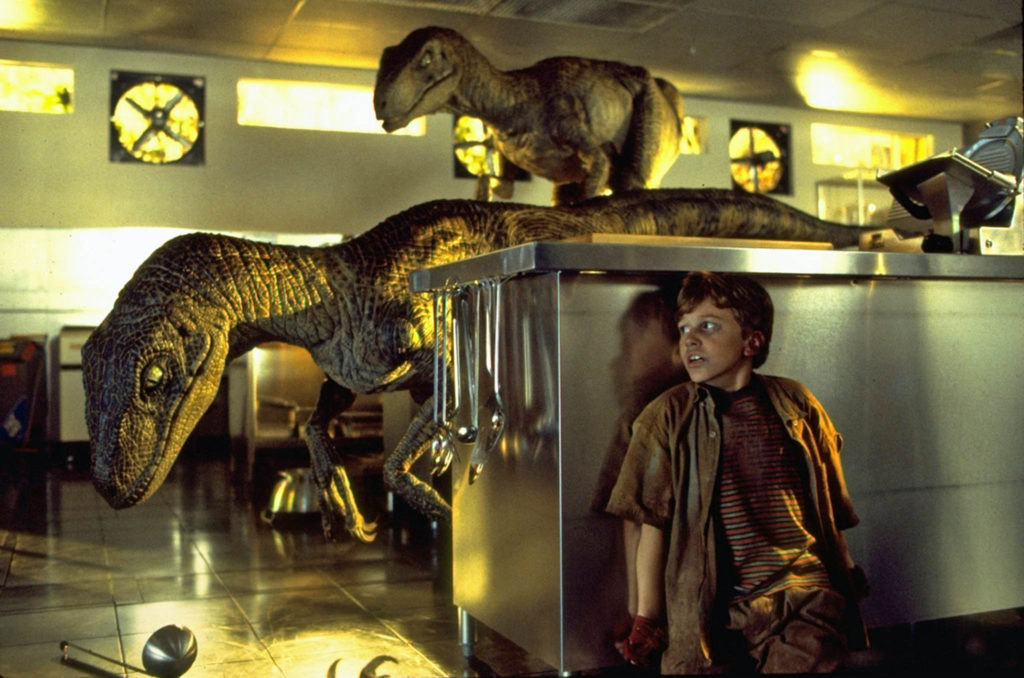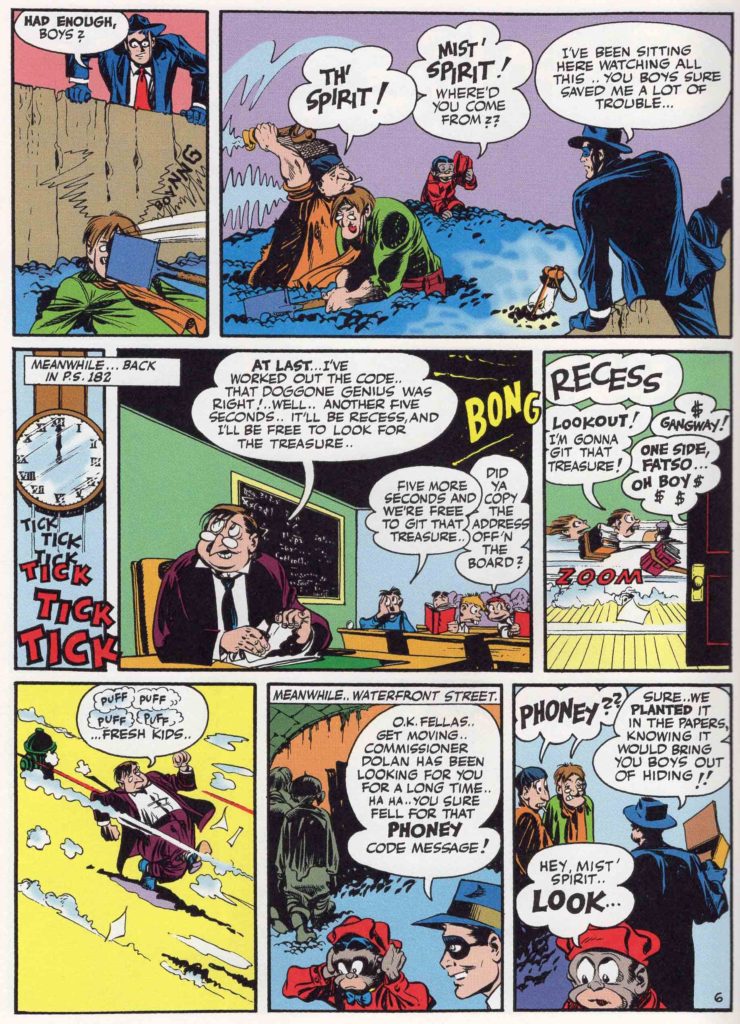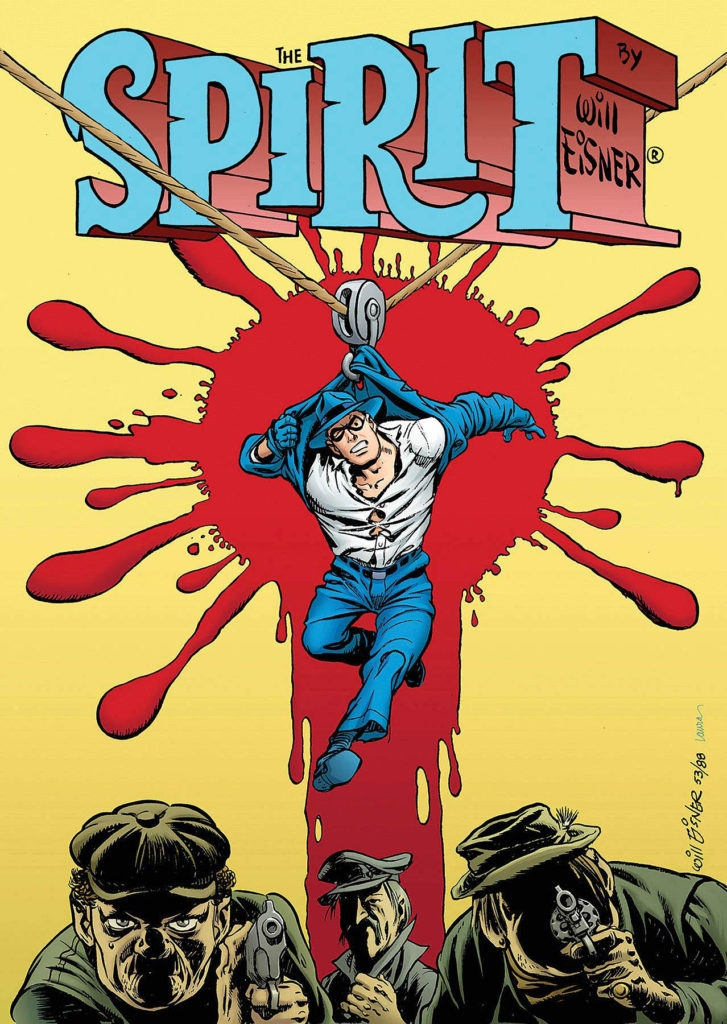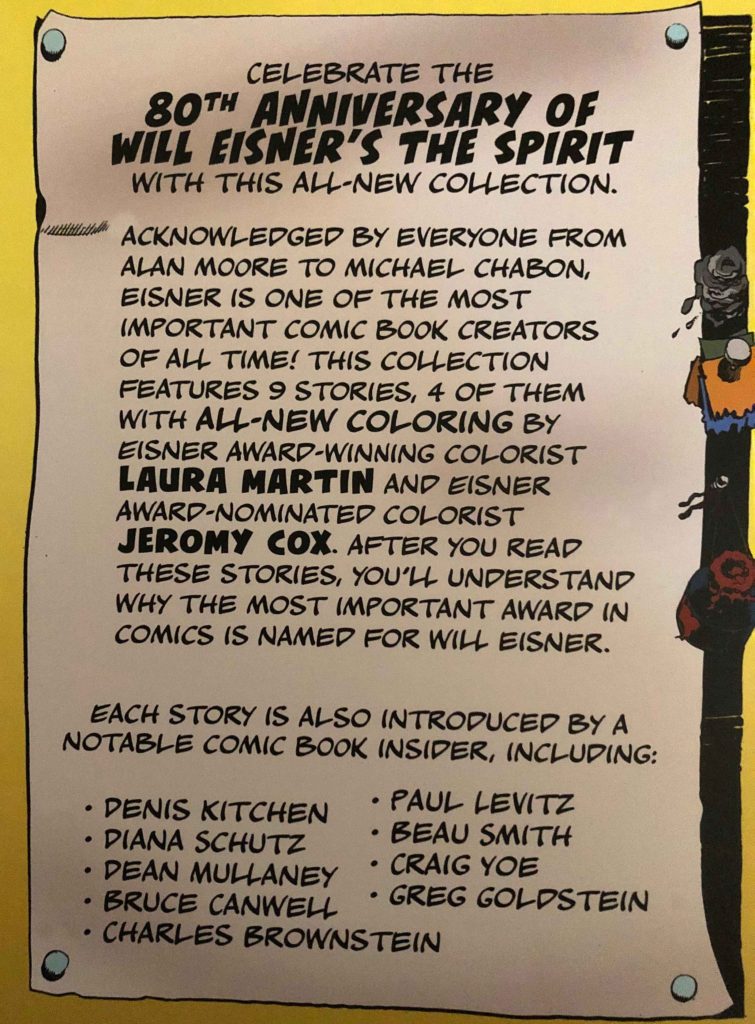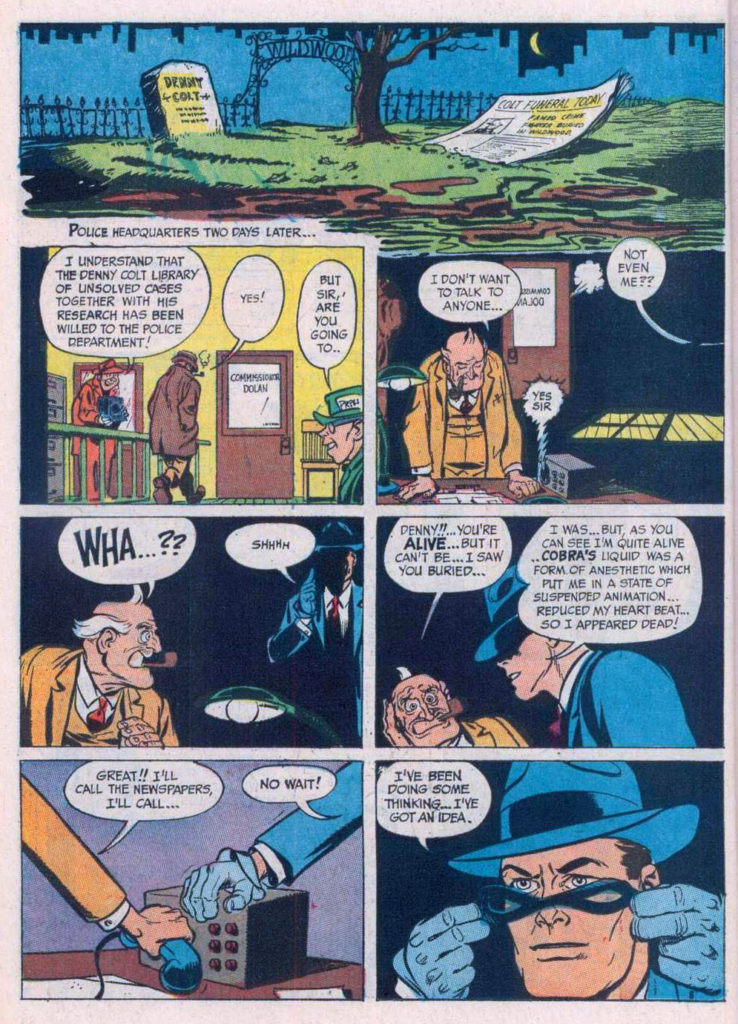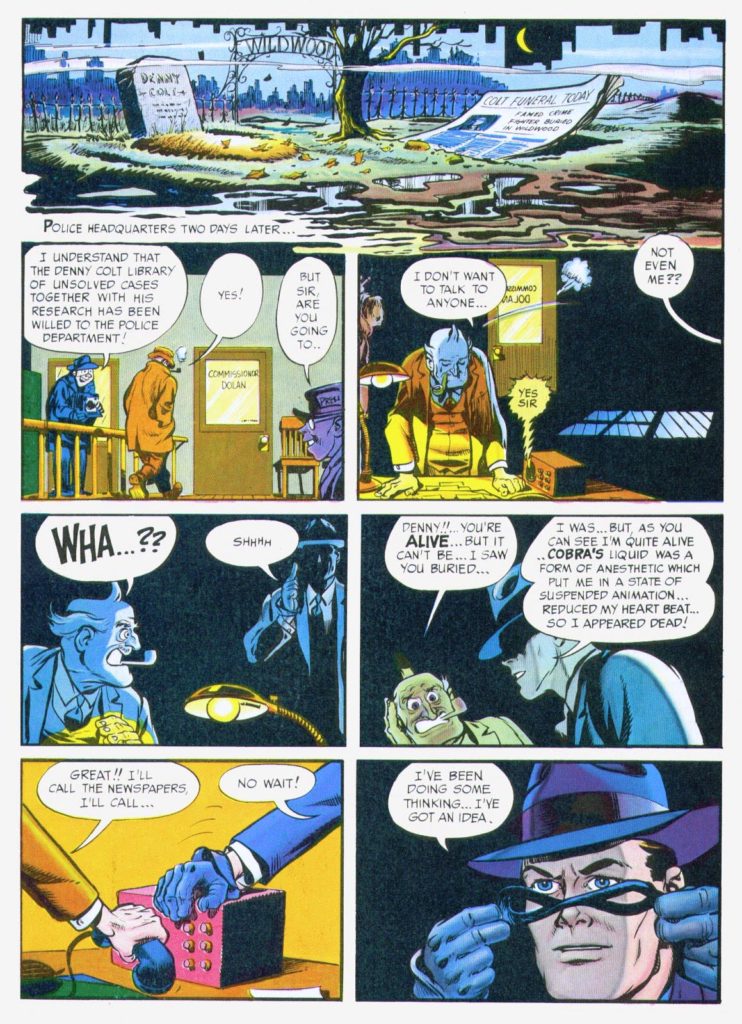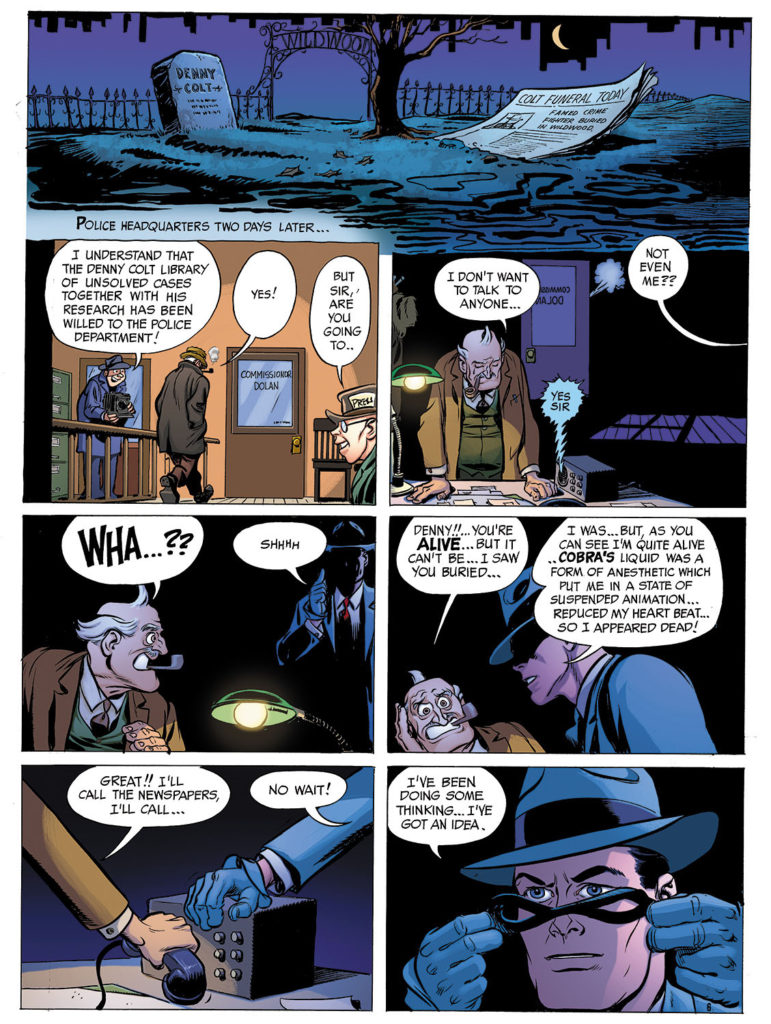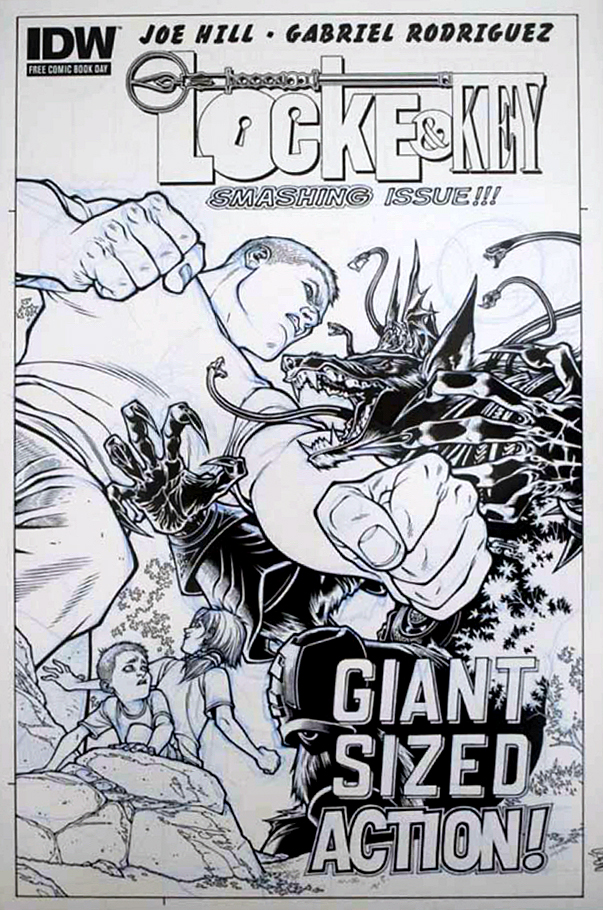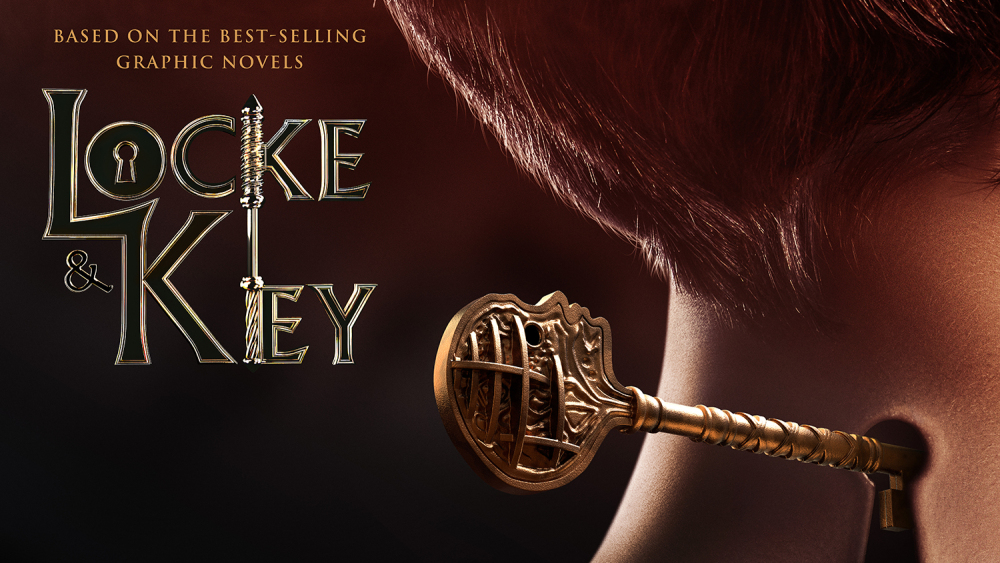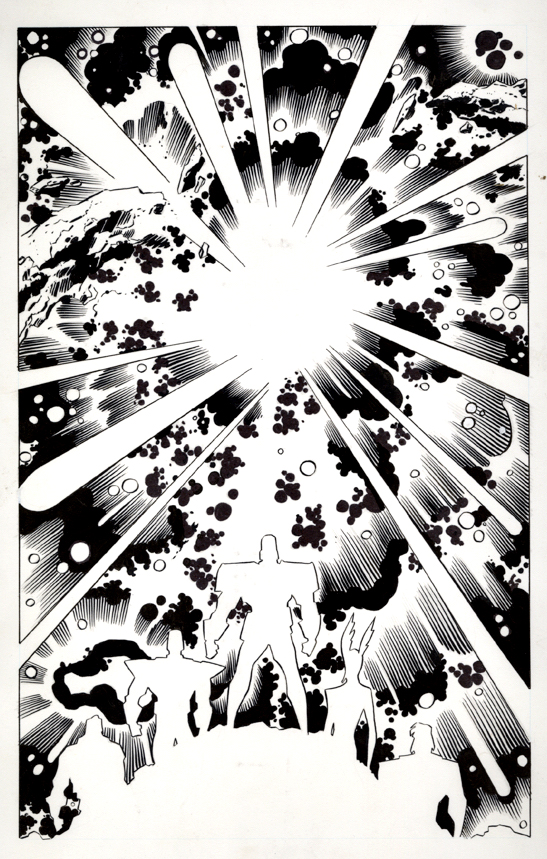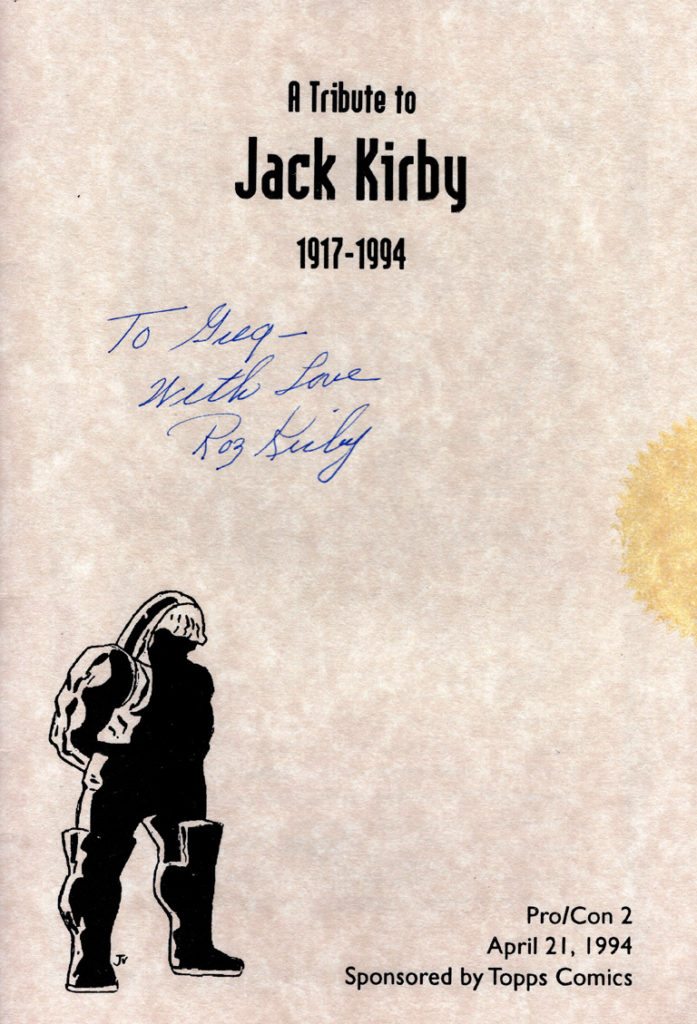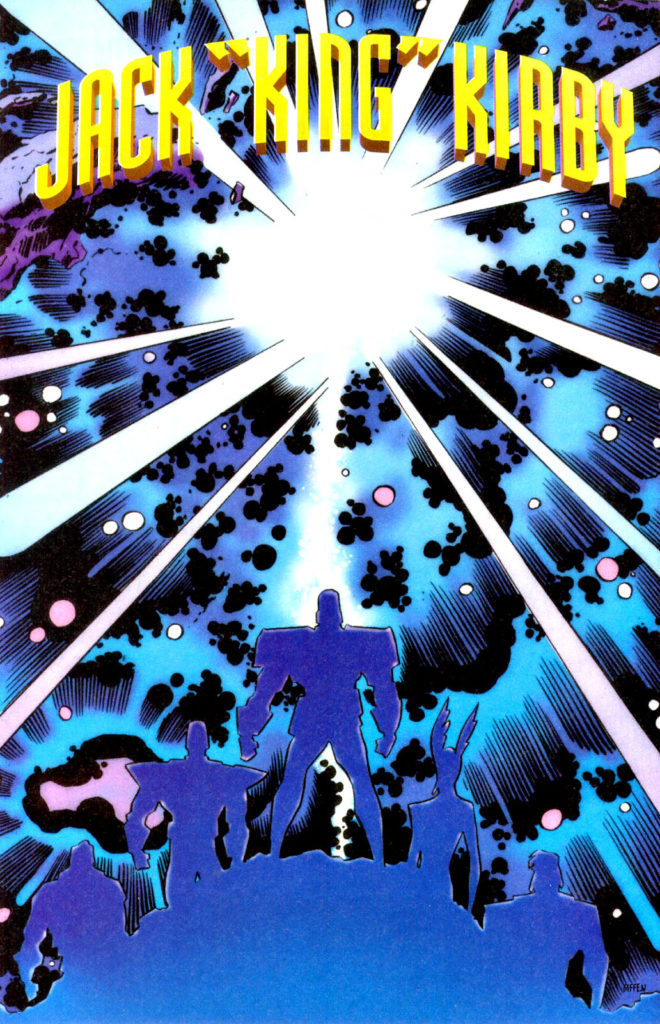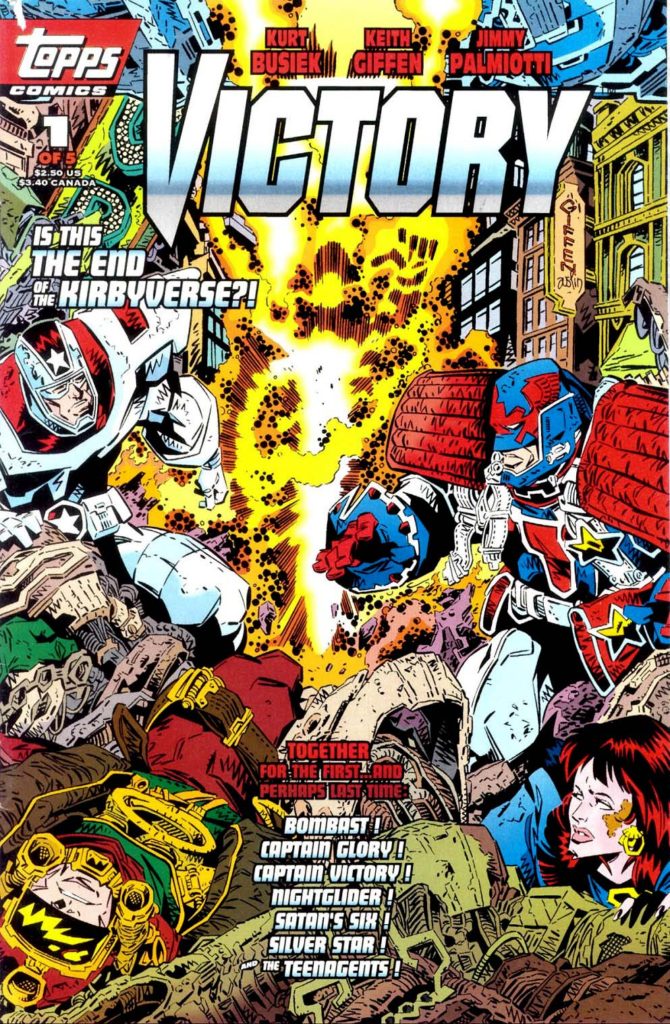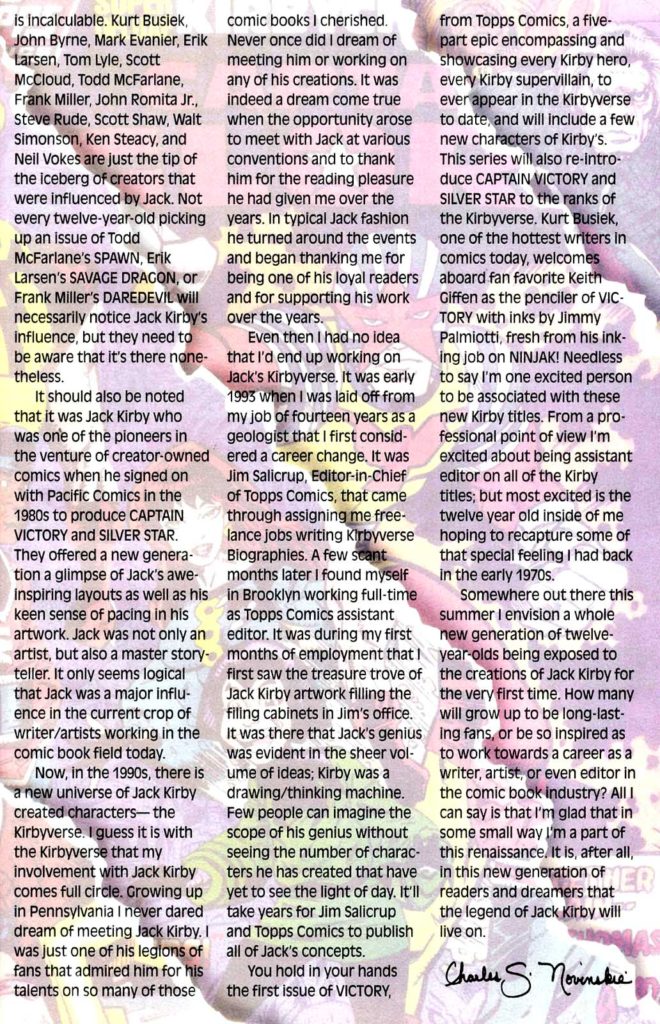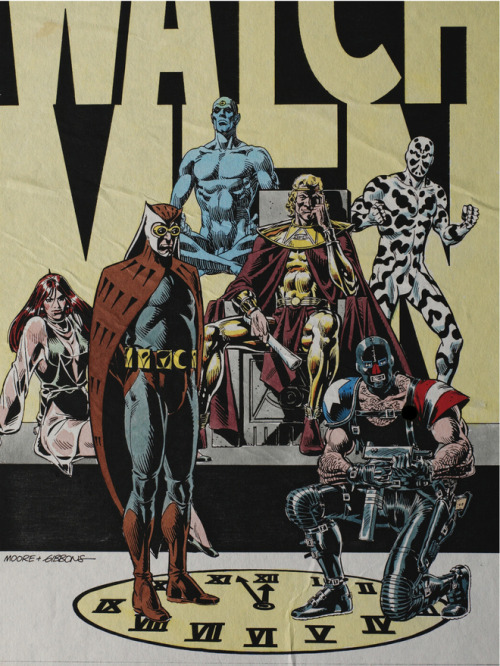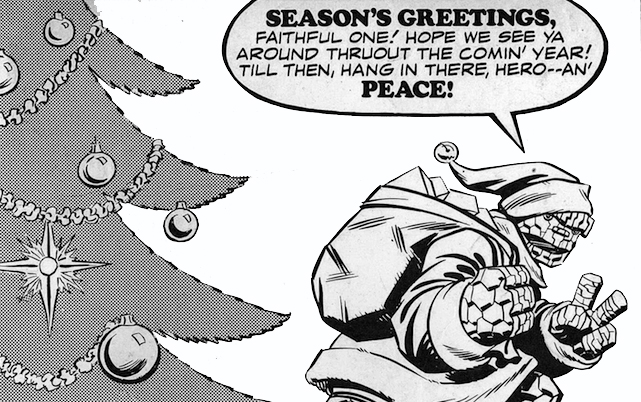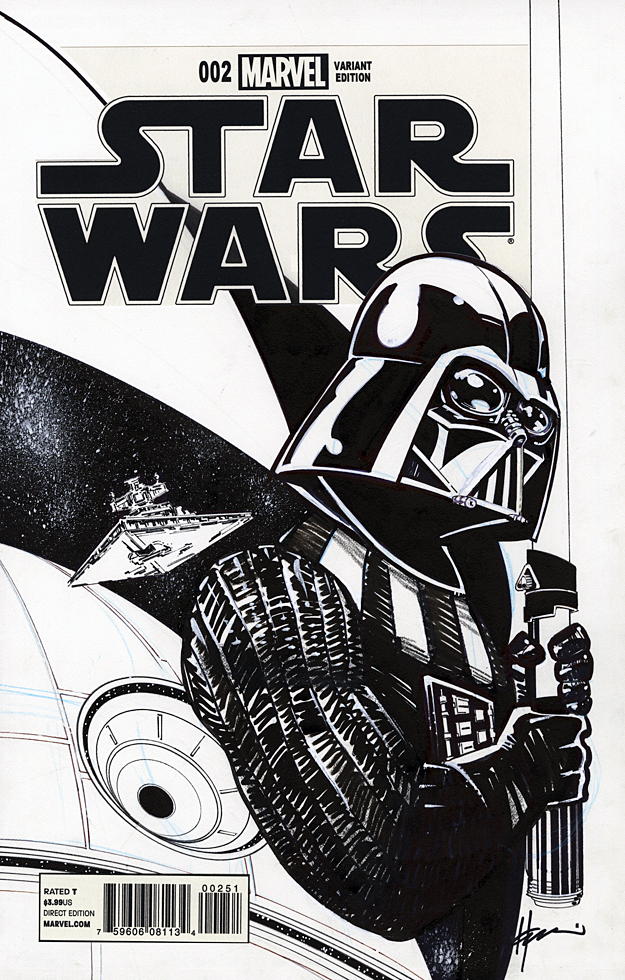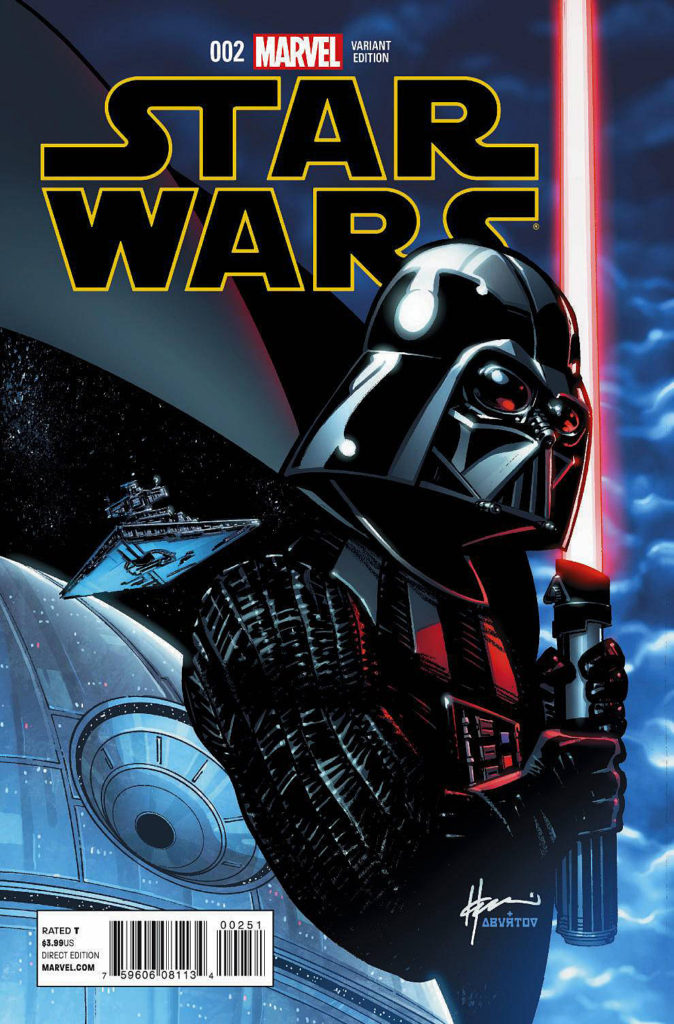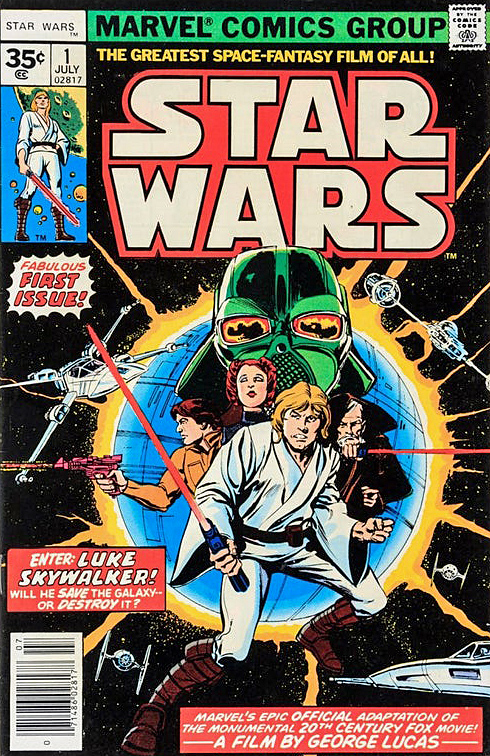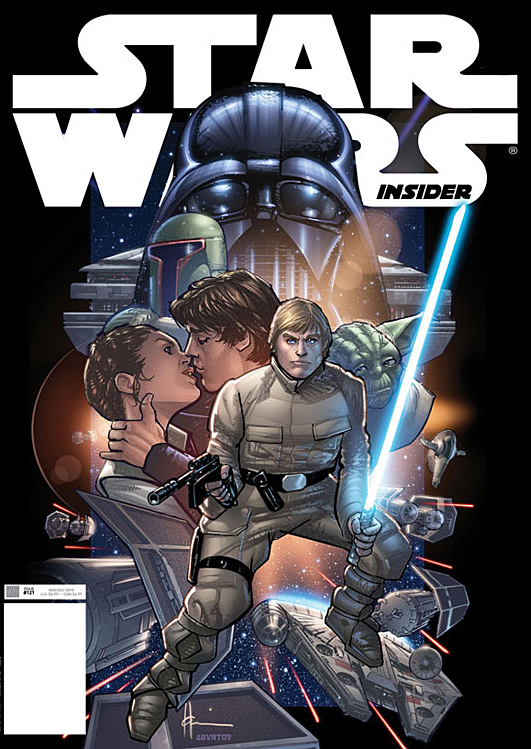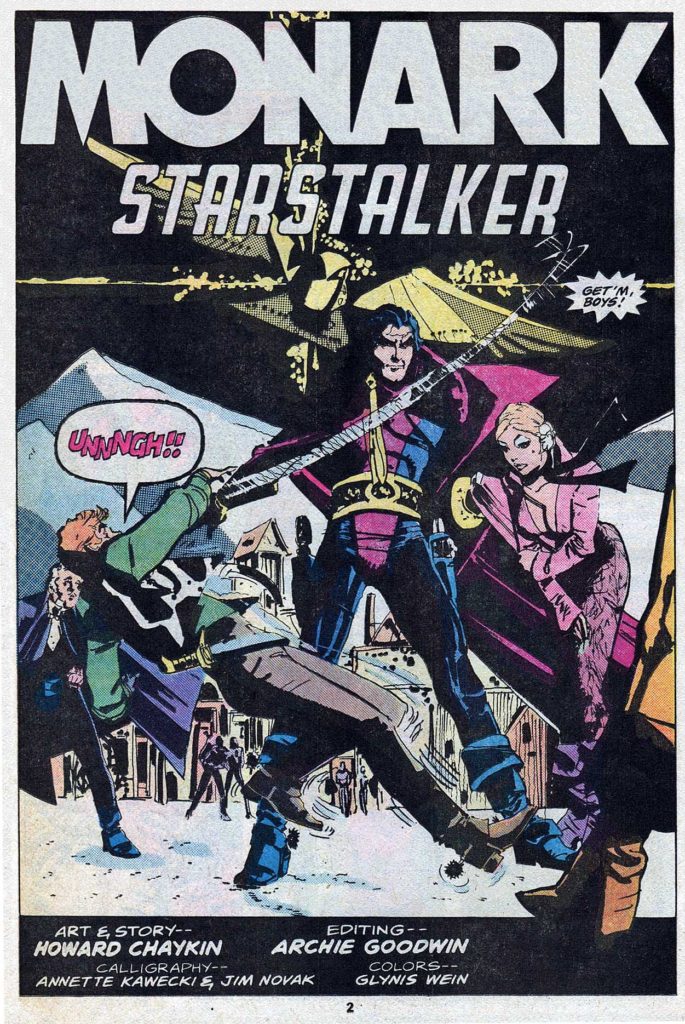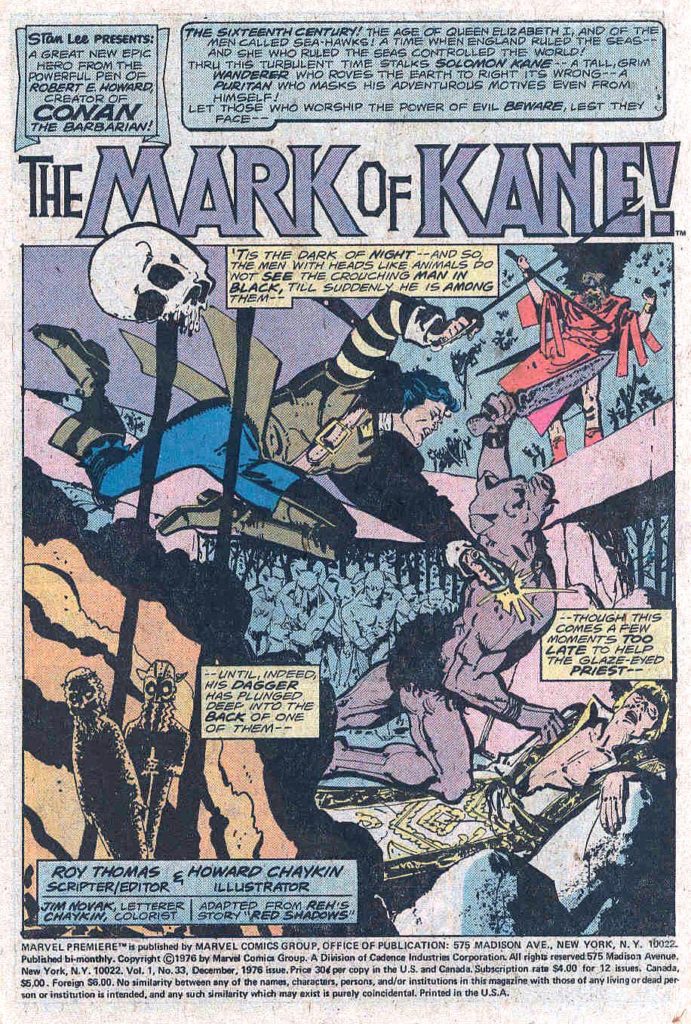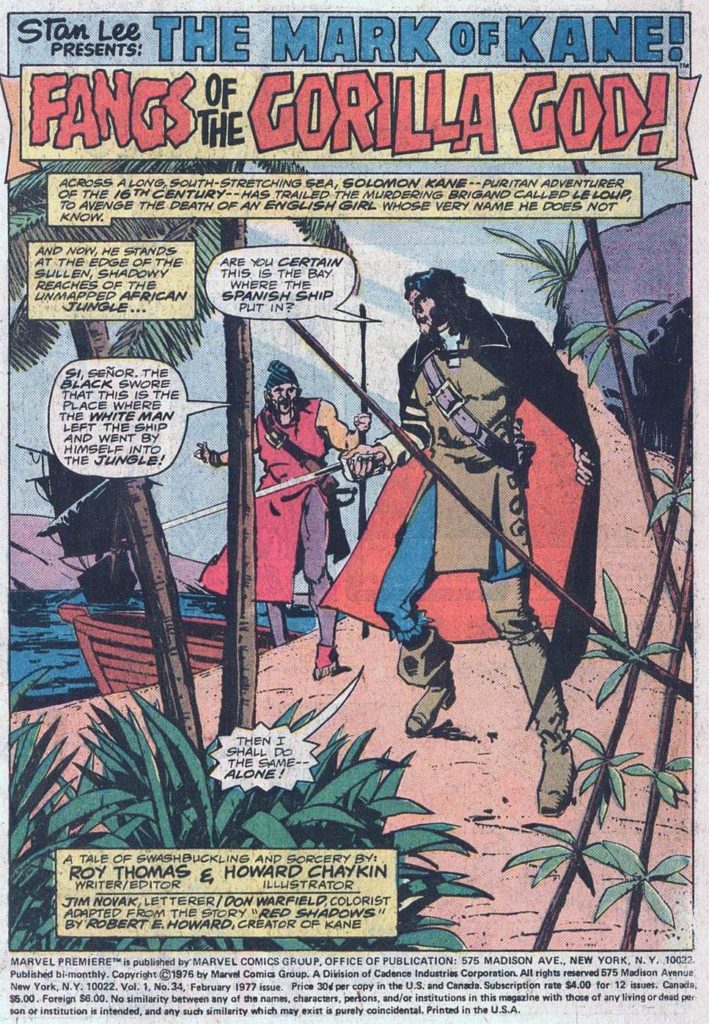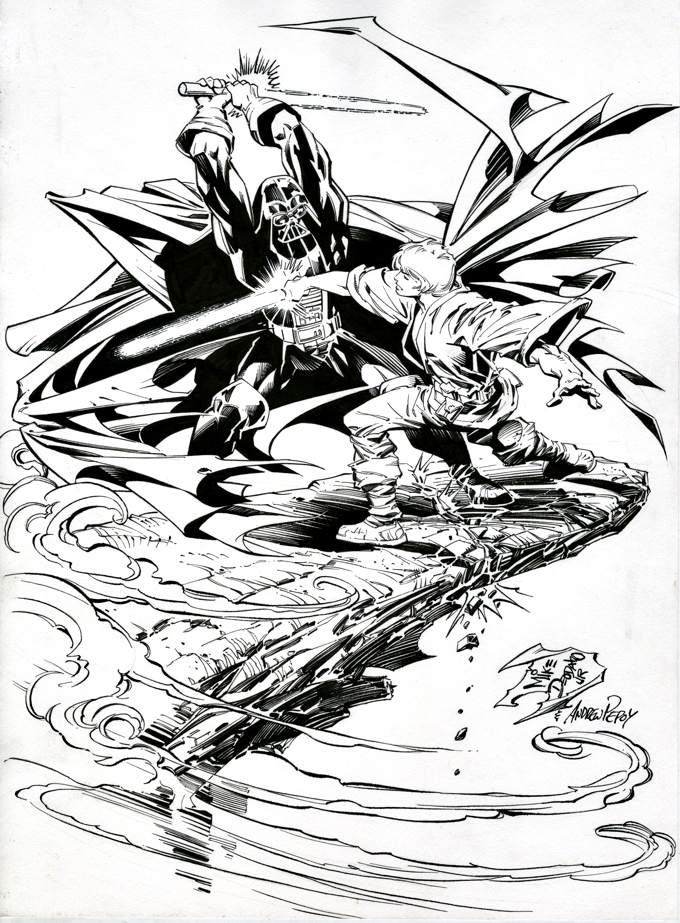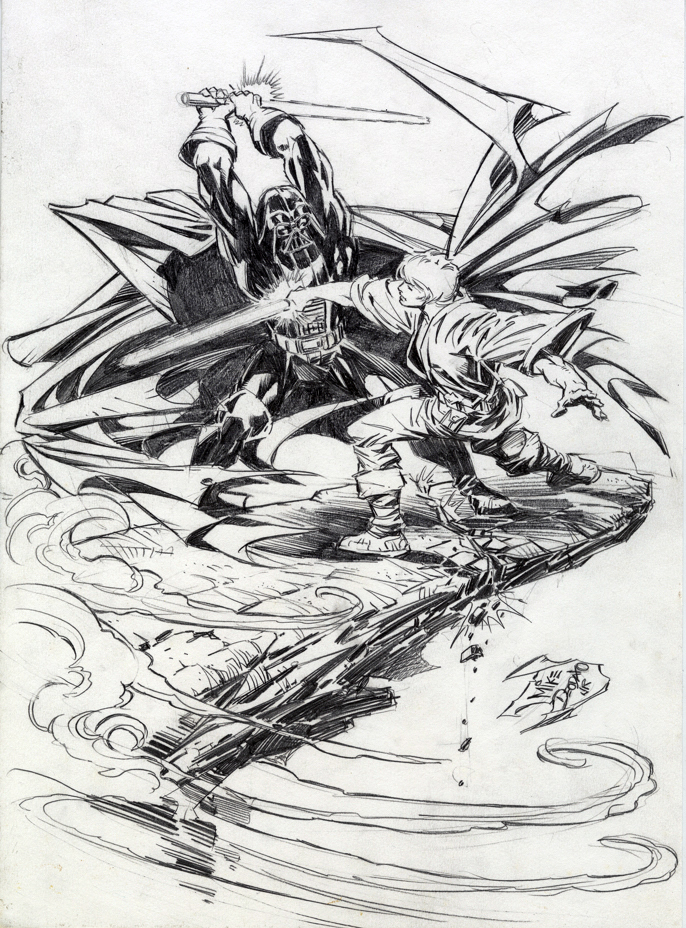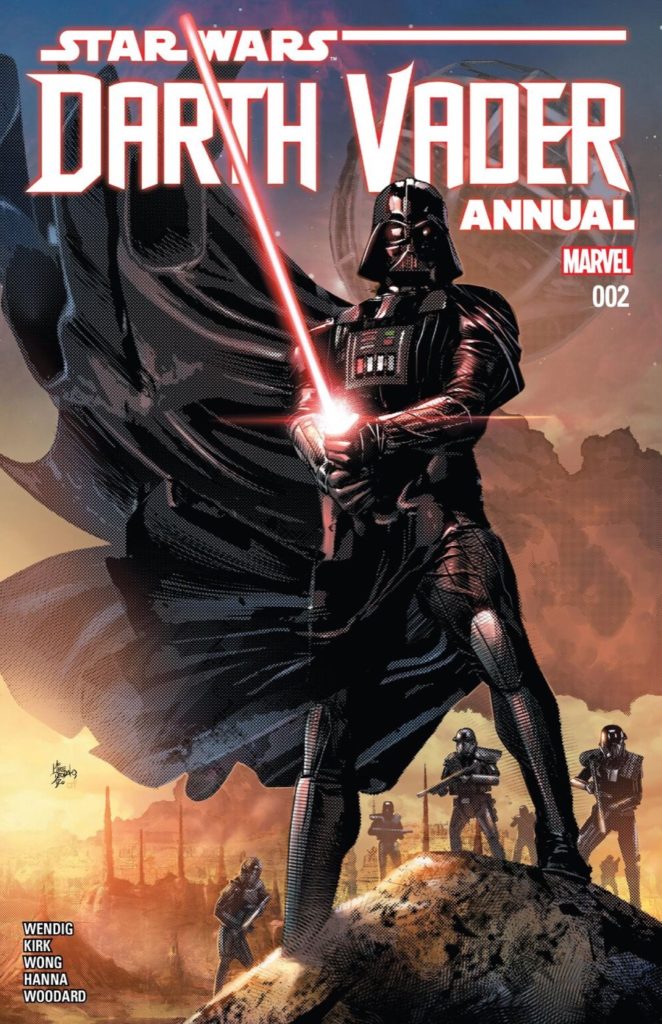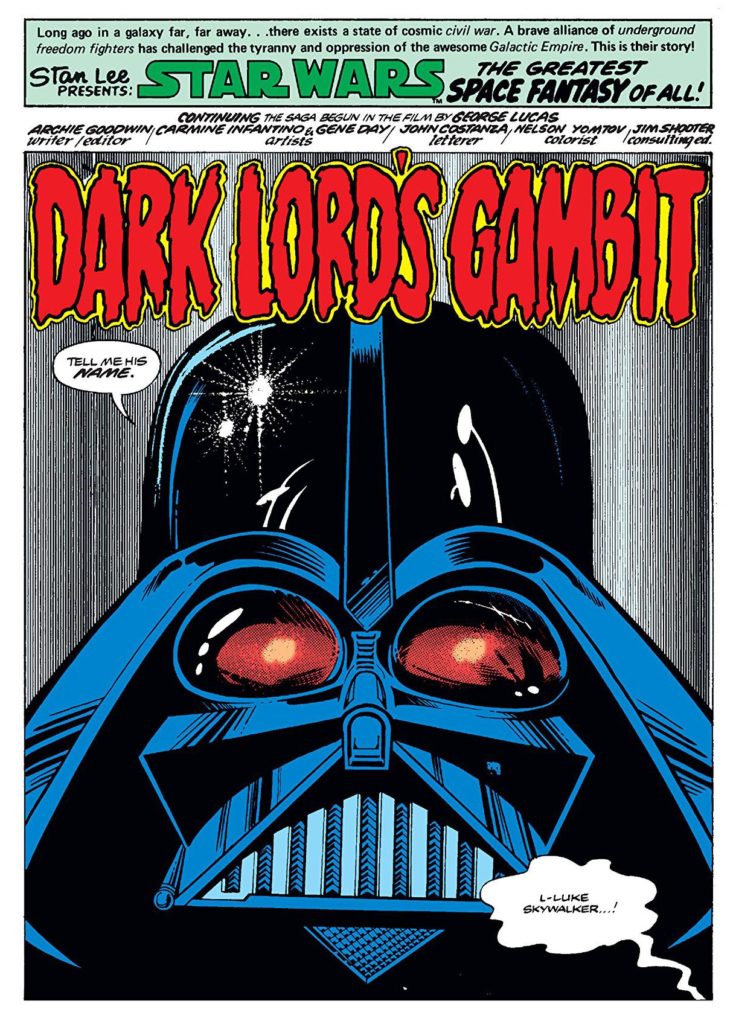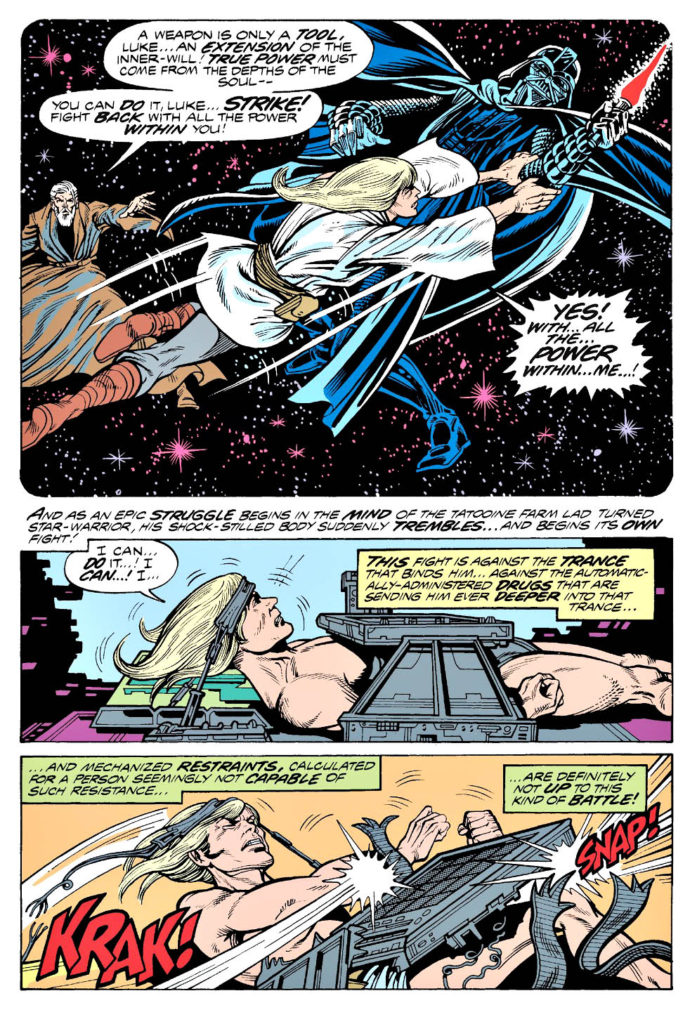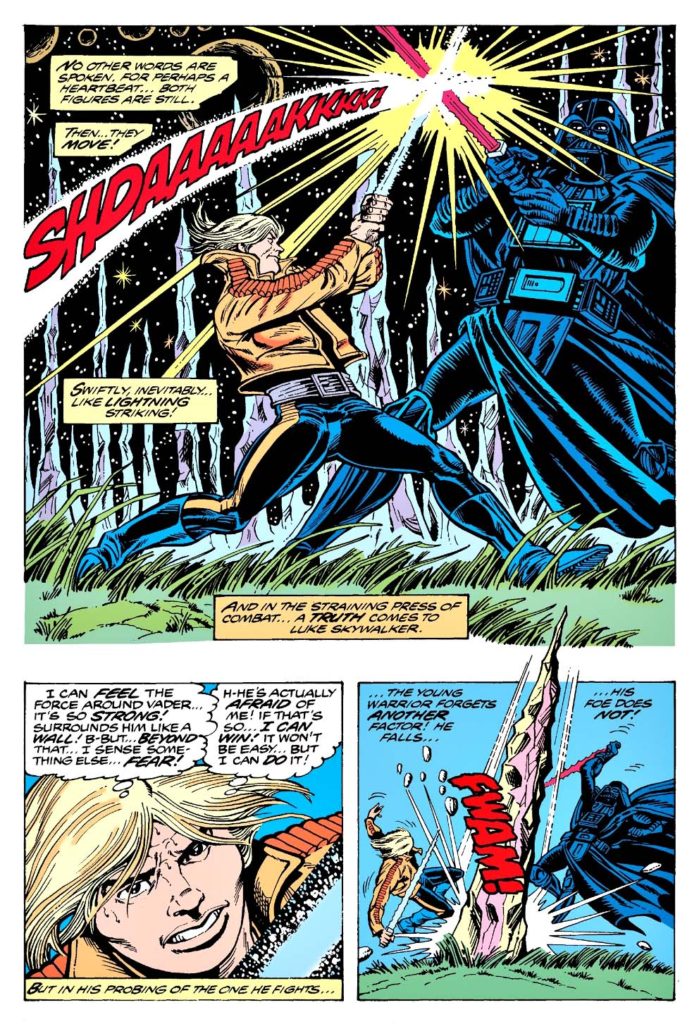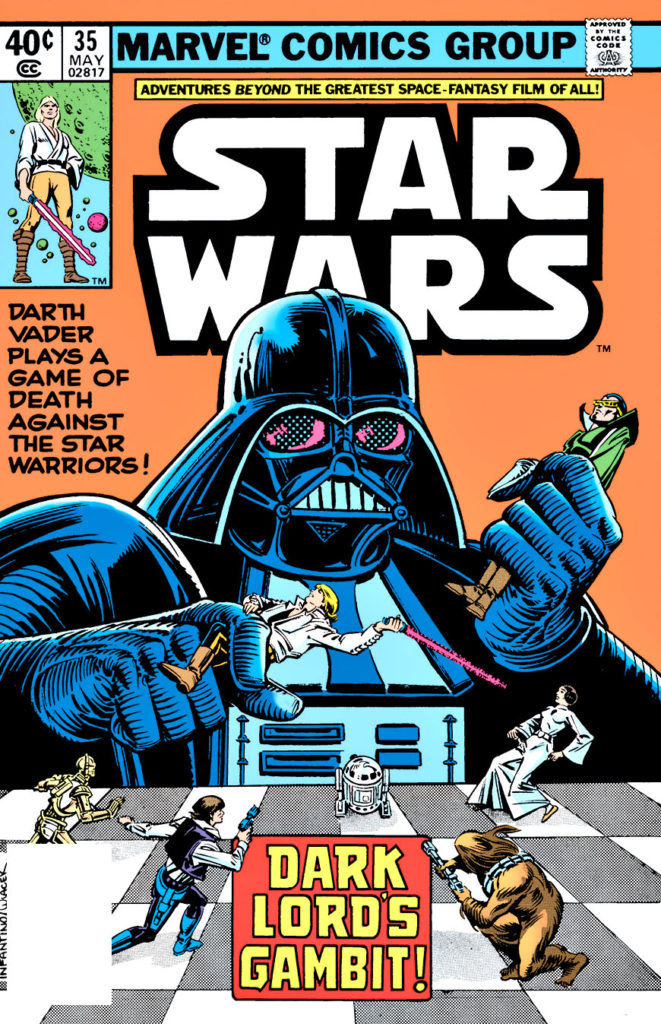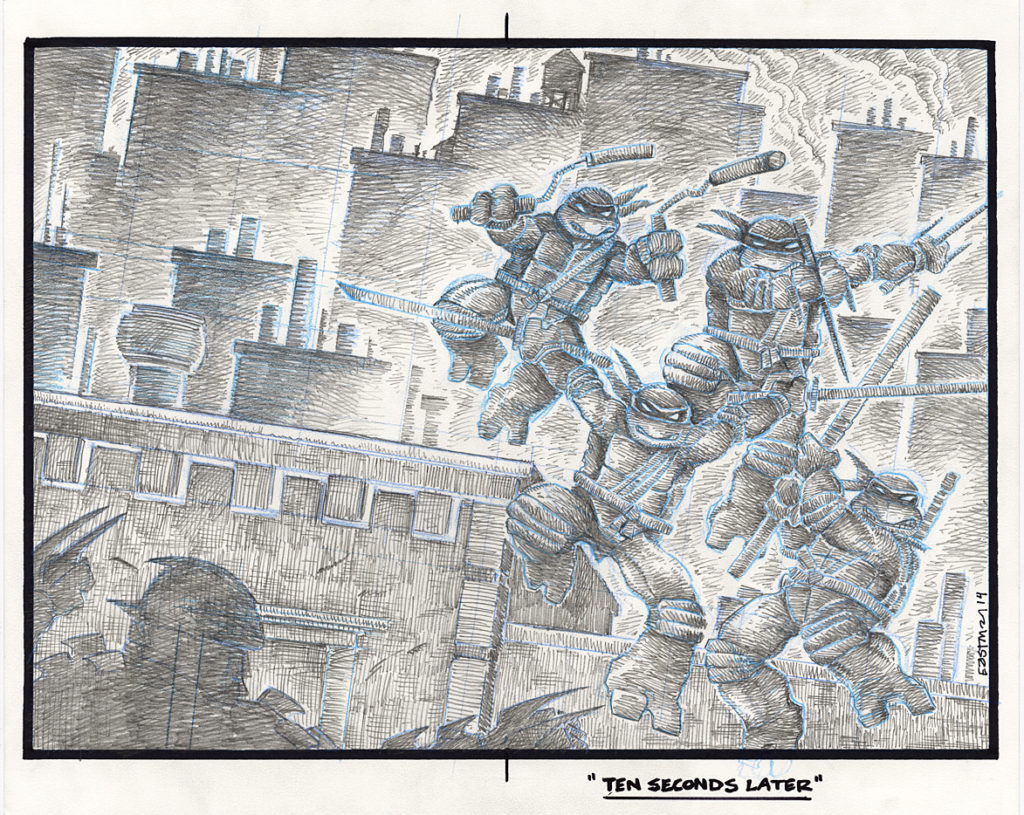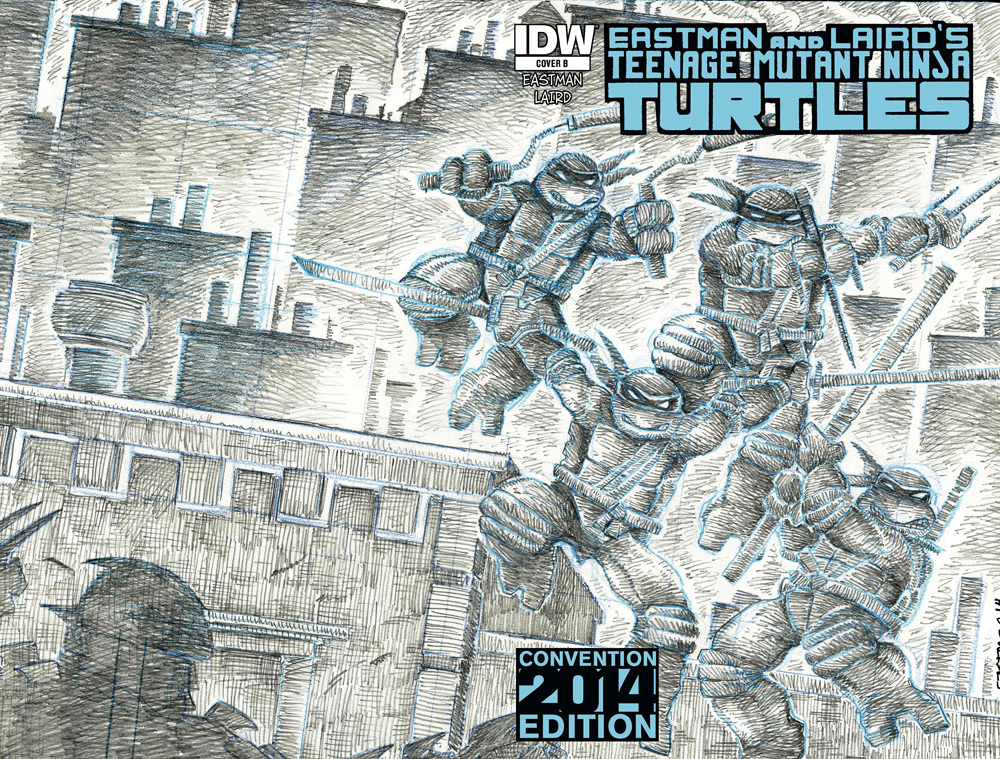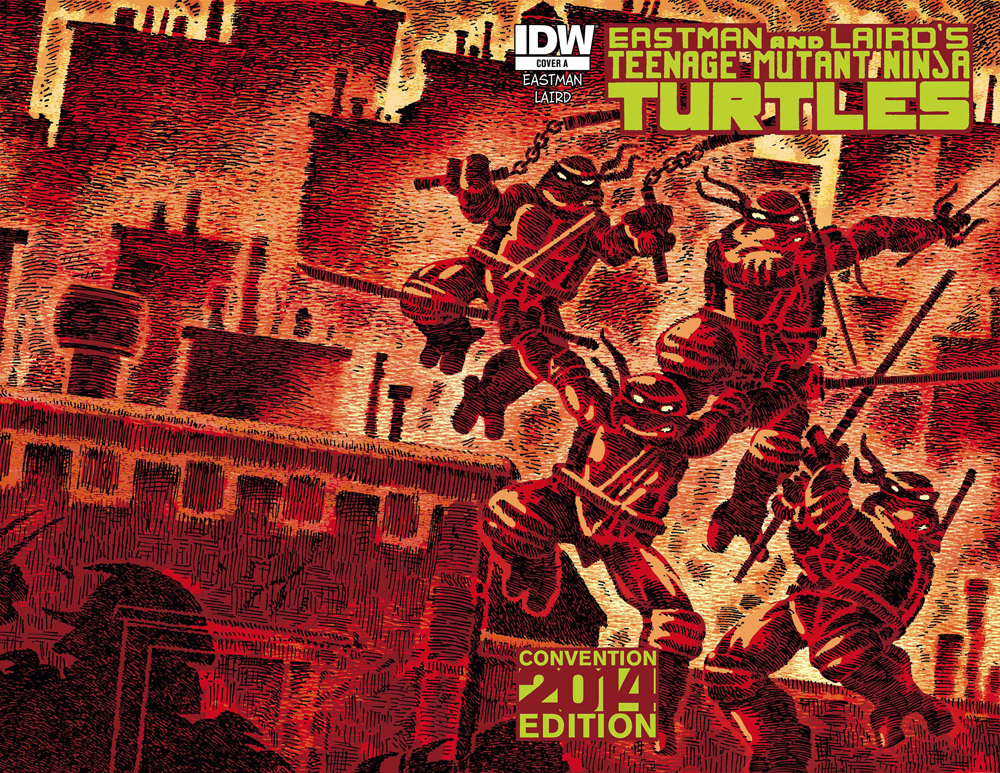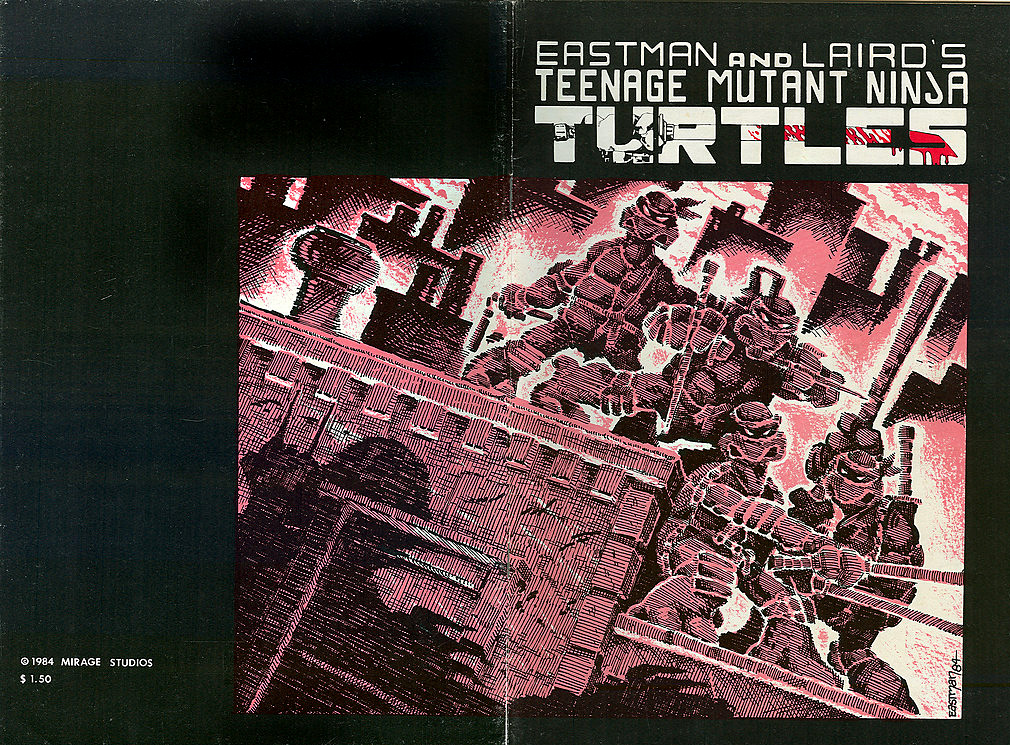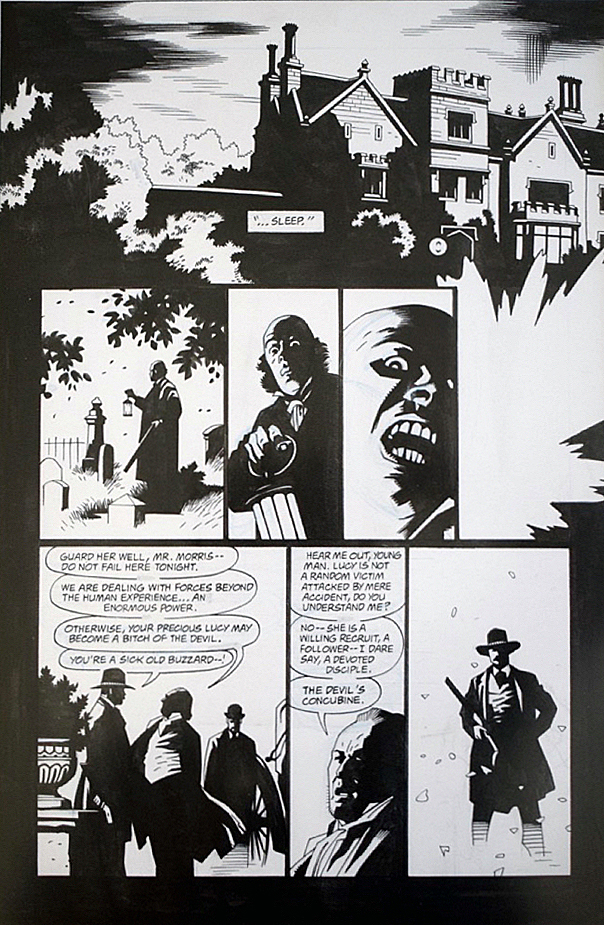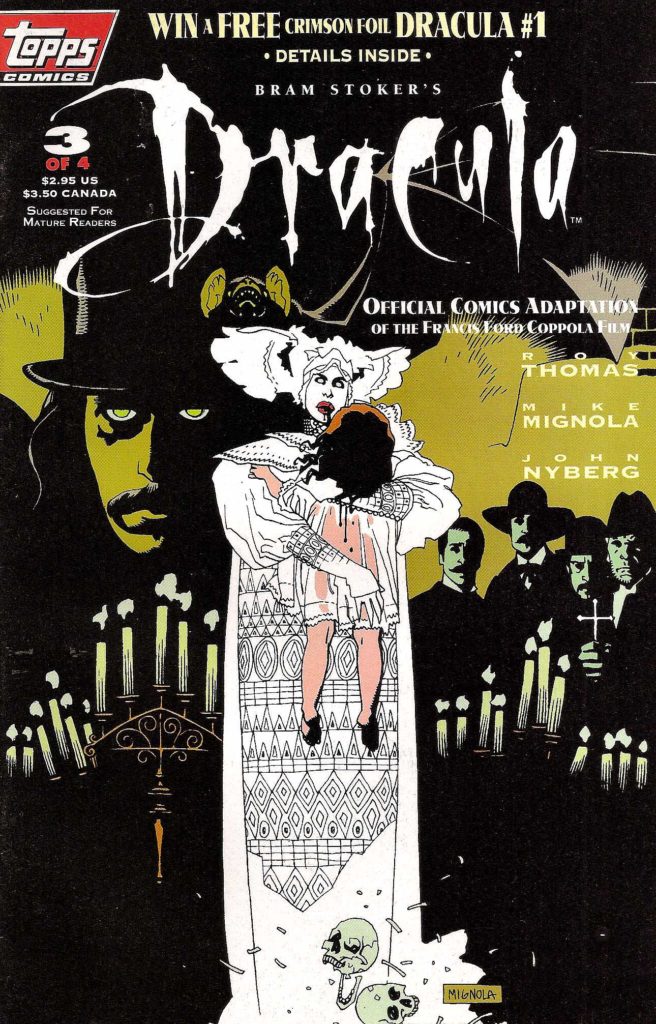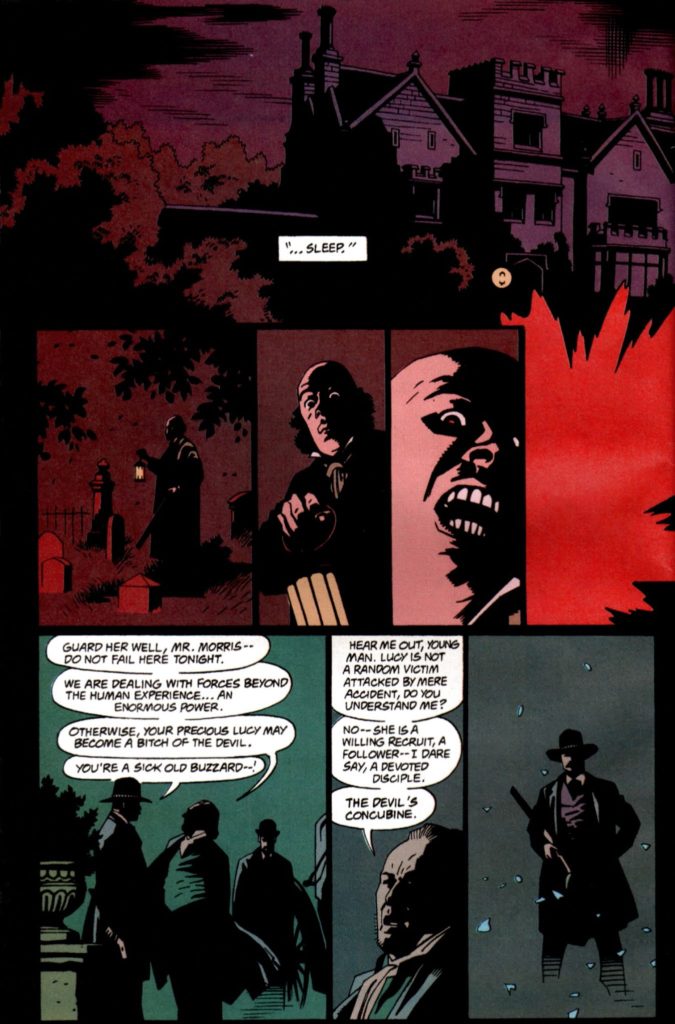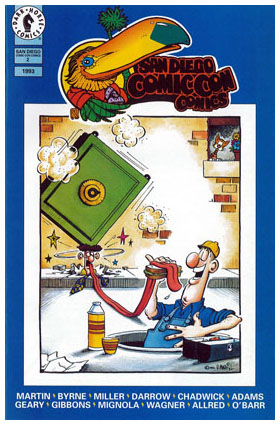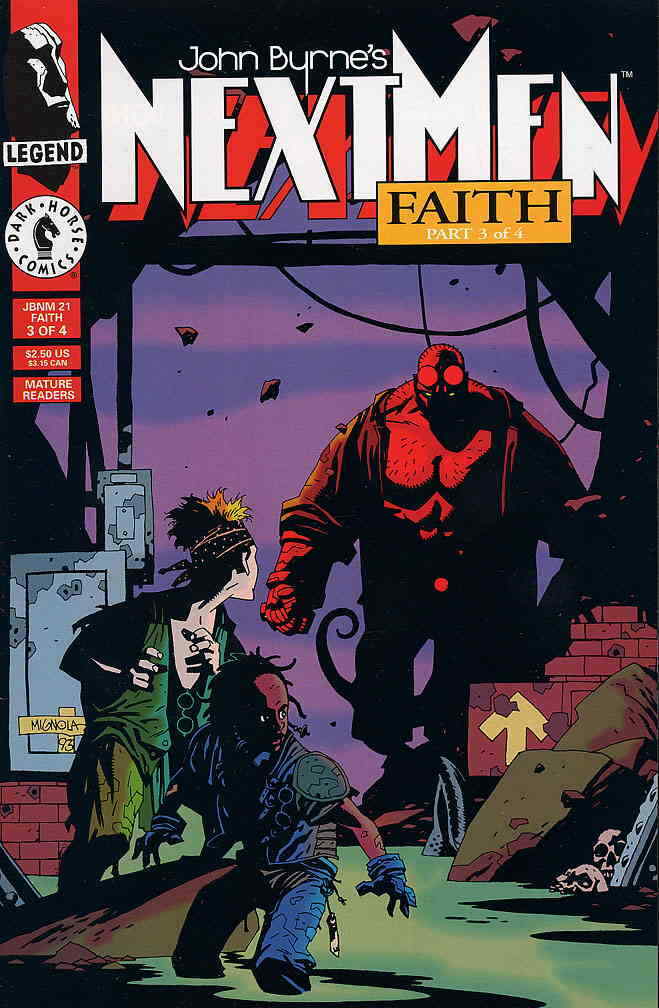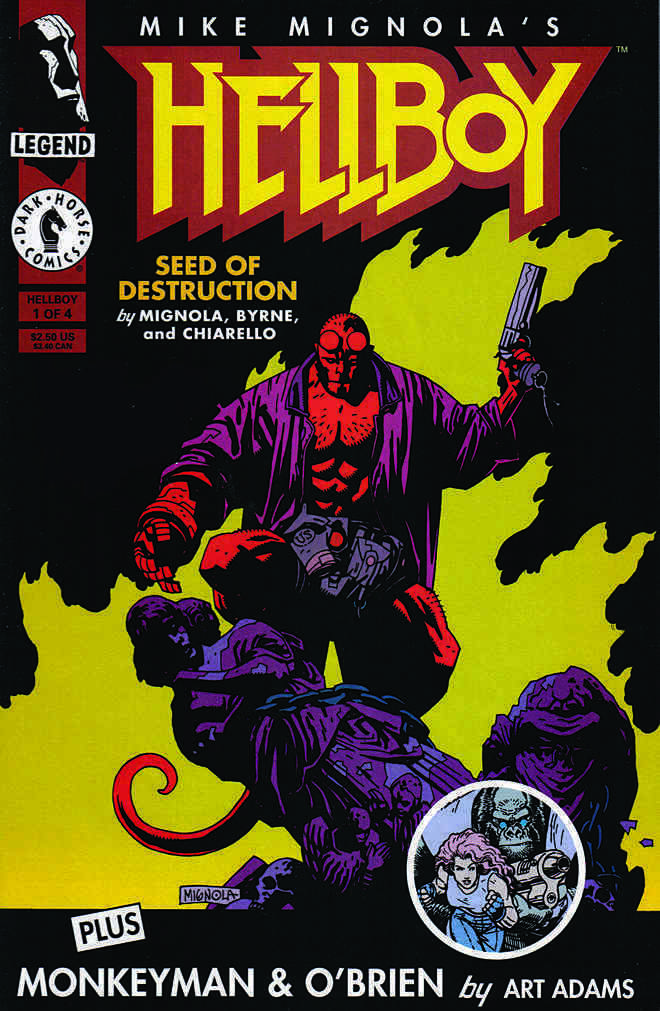Gil Kane — Jurassic Jeopardy
Jurassic Park #4, August 1993

Michael Crichton’s Jurassic Park novel turns 30 this year, so the next few posts pay tribute to the book that became a blockbuster film franchise.
Gil Kane and George Perez teamed up on artistic chores for the original Topps Jurassic Park film adaption. (with writing by Walter Simonson). It was an unique pairing suggested by EIC Jim Salicrup, and for the most part, worked very well. All four issues came out on the predetermined schedule, not an easy feat, especially in those days with newsstand distribution considerations. But the schedule was… tight.
I was delighted to pick up the original art for Gil’s variant cover for issue #4 a few years ago at auction.
The scene is from the climax of the film where our young heroes are menaced in the commissary kitchen by the crafty velociraptors. It’s a cool composition that captures the terror of the moment.
Here’s the rub — Is that a chubby raptor missing a neck? Or a deformed T-Rex? I mean, what the hell kind of dino did Gil actually draw?
You can’t tell from the scan, but there’s an art patch on the dino’s face. Clearly some of it absolutely, positively needed to be altered to be approved overnight. But someone in Universal’s licensing department must have ultimately taken pity on our harrowing schedule, and us, because the final version is definitely not on model.
Since this is technically not the “main” cover, which is by Dave Cockrum, maybe they gave us a pass. (I don’t remember who did the art patch — George, our production department or for that matter, Gil.)
Ah, Gil. We sent him lots of photo reference. I can’t recall if we sent this exact scene specifically, but regardless, he had reference. Like I said, lots of it. Only problem is, as I found out later on, Gil didn’t have much use for reference.
It doesn’t matter. He was one of the best. I consider myself fortunate to know him professionally, albeit briefly. Stories about him were legendary by the time I met him in 1993.
And, I got at least one “Greg, my boy…” out of him, so I could cross that off the list. Whew.

